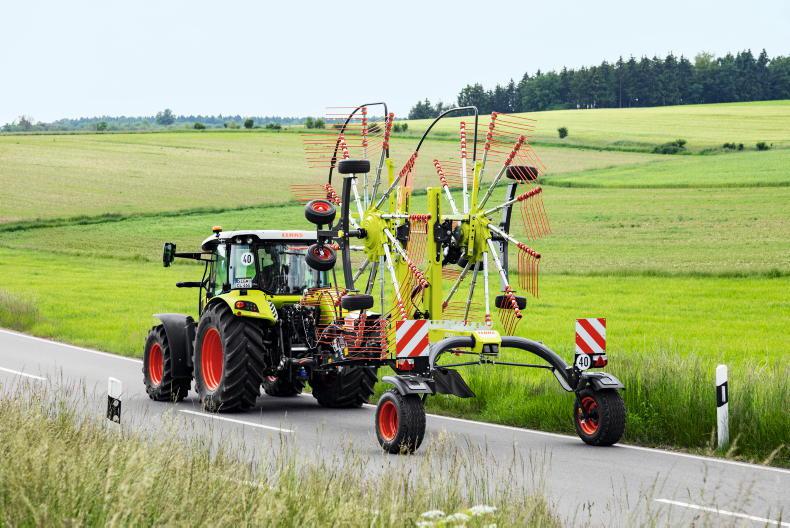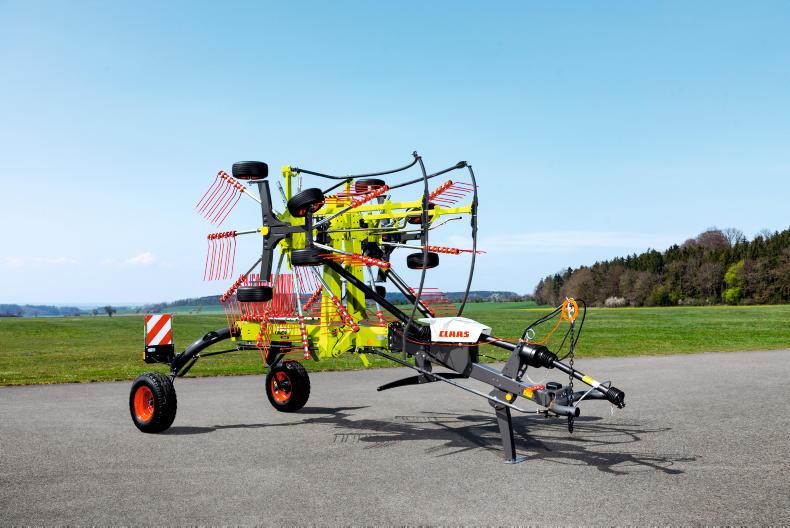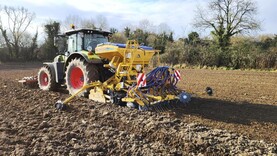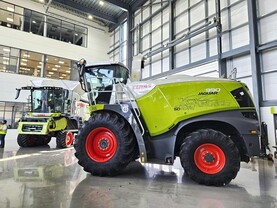Claas has updated its range of twin-rotor Liner rakes with the introduction of seven models with working widths spanning from 6.2m to 10m.
The Grass Care rotor guidance system means the rotors are now actively suspended during operation.
The manufacturer says that when the rotor arms are lowered, the rear rotor wheels touch down first, producing a jet-effect that prevents the tines from digging in and damaging the grass sward.
The Business models are equipped with individual rotor lift, which is operated by pre-selection on the terminal as standard (this function is optionally available for spool valve operation on the Trend versions).
The Liner 2600 and 2700 are fitted with a four-wheel chassis as standard, while the Liner 2800-3100 come with a six-wheel chassis. The front two chassis wheels are steerable.
With the six-wheel system, the rear rotor wheels are replaced with pendulum axles.
The rake height can be read off the scale on the rotor’s central shaft and adjusted by a crank handle on the rotors.
With the 2800 and 2900 Business models, the height of each rotor can be controlled separately using the Cemis 10 terminal and then actuating the tractor spool valve.
As an option, the Trend version can be supplied with hydraulic rotor height adjustment with direct spool valve control.
Tine arms
In the event of a collision, Claas says the tine arms deflect at a predefined bending point to avoid damaging the auxiliary gearbox.
The rotors are fitted with individual friction clutches to protect against overload. Claas claims they respond more smoothly than cam clutches and allow work to continue non-stop even during load peaks.
On the 2800-3100 models, the working width and swath width are adjusted hydraulically using the telescopic arms.
The 2700 uses a single-acting hydraulic ram, while on the 2600 they are adjusted mechanically. 
Active float
Active float hydraulic rotor suspension is standard on the two 2800 and 2900 Business models.
This functions in a similar way to the suspension in the Disco Contour disc mowers. It is adjusted directly on the machine, with a gauge on the main frame indicating the pressure in the hydraulic circuits.
The ground pressure of the rotor can be adapted to the crop and ground conditions by adjusting the suspension pressure. 
Forced steering
All twin-rotor Liner rakes are steered by a transport axle with mechanical forced steering. The steering angle can be mechanically adjusted. Speeds of up to 40km/h are permitted on the road.
The 3100 comes with wheel weights as standard, while wheel weights are optionally available for all other models.
The 2700-3100 have a transport width of 2.97m, while the 2600 comes in at 2.55m (on 260/75-15.3 tyres).
The new range will be available in Ireland next year.






 This is a subscriber-only article
This is a subscriber-only article










SHARING OPTIONS: